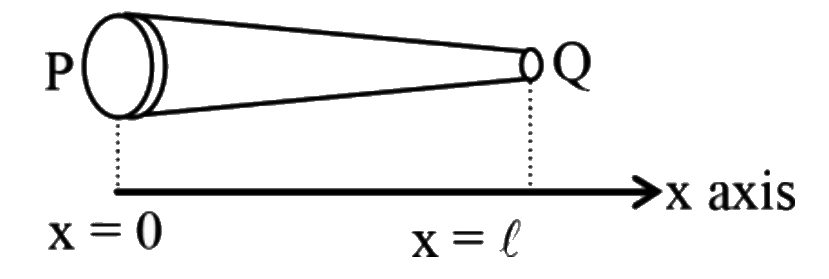A potential difference is applied across the ends of a metallic wire. If the potential difference is doubled, the drift velocity will
be double the initial velocity
remain same
be √2 times the initial velocity
be half the initial velocity
The correct Answer is:A
Step by step video & text solution for A potential difference is applied across the ends of a metallic wire. If the potential difference is doubled, the drift velocity will by Physics experts to help you in doubts & scoring excellent marks in Class 12 exams.
Updated on:21/07/2023Similar Questions
A wire of length l tapers uniformly from end P to end Q with the diameter at P twice that at Q. A potential difference is applied across the ends of the wire. Which graph represents the variation of the drift velocity V of the conduction electrons with distance x?

View SolutionA potential difference V is applied across a wire of length I and thickness d. If value of V is doubled, the drift velocity
View Solution
Knowledge Check
When a potential difference is applied across the ends of a linear metallic conductor
AThe free electrons are accelerated continuously from the lower potential end to the higher potential end of the conductorBThe free electrons are accelerated continuously from the higher potential end to the lower potential end of the conductorCThe free electrons acquire a constant drift velocity from the lower potential end to the higher potential end of the conductorDThe free electrons are set in motion from their position of restA potential difference (V) is applied across a length of thickness d. if a wire of length of the wire is doubled, the drift velocity
Abecomes zeroBbecomes doubleCbecomes halfDemains sameA potential difference (V) is applied across a length 7 of thickness d. if a wire of length of the wire is doubled, the drift velocity
Abecomes zeroBbecomes doubleCbecomes halfDremains same
A potential difference V is applied across a coper
wire of diameter d and length l. When d is doubled,
the drift velocity:-
View SolutionA potential difference (V) is applied across a wire of thickness d and length I. If thickness is doubled the drift velocity
View SolutionA potential difference Vis applied across a wire of length I and thickness d. If value of Vis doubled, the drift velocity
View SolutionA potential difference of Vis applied at the ends of a copper wire of length I and diameter d. On doubling only d, drift velocity
View SolutionA potential difference of V applied at the ends of a copper wire of length l and diameter d. On doubling only d drift velocity.
View Solution
